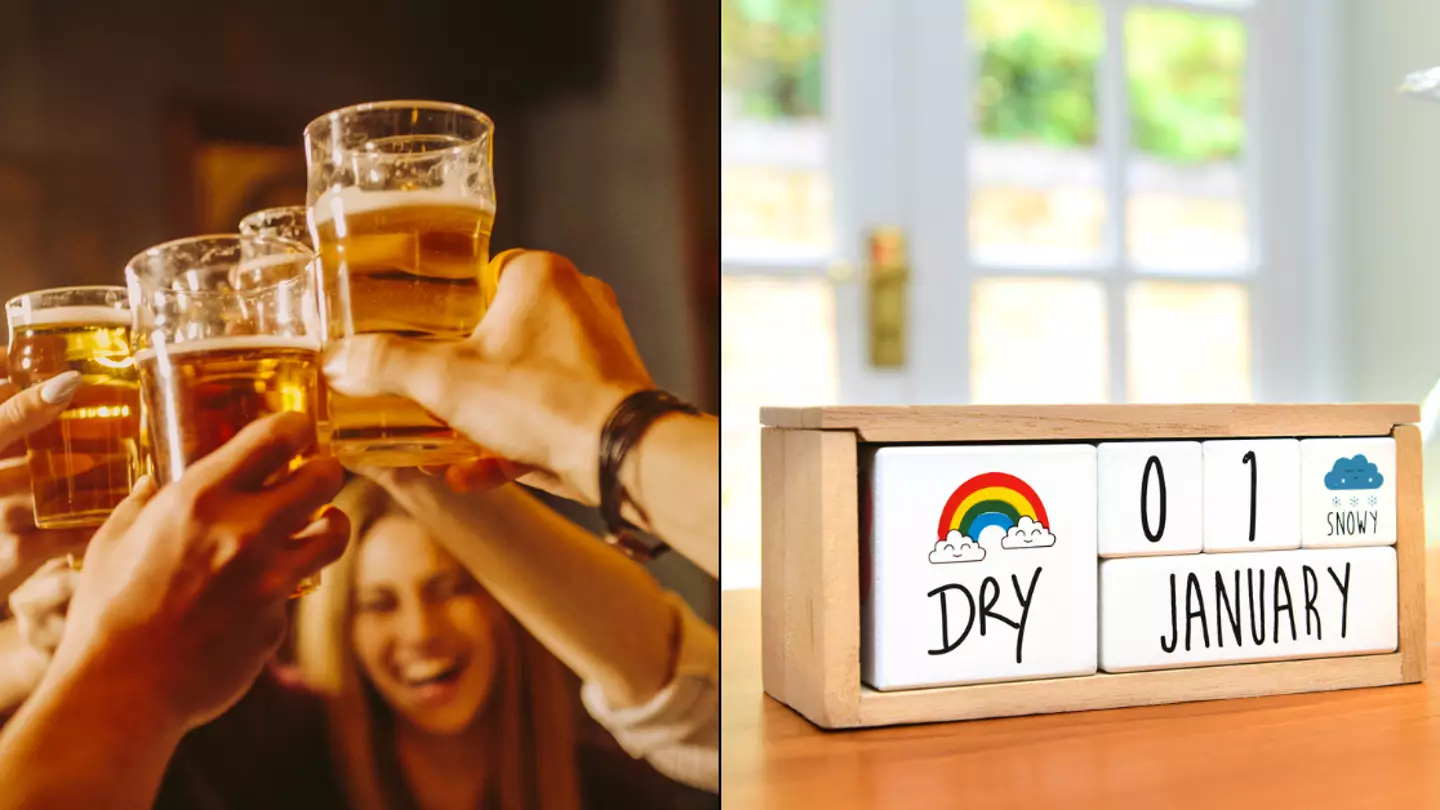
It’s nearly about that time where people go from drinking for an entire week to suddenly going cold turkey for an entire month.
While Christmas and New Year is a great excuse to have all the treats you could ever hope for, tonight marks the end of a boozy era for many people.
A popular way to cleanse yourself for the New Year is to do Dry January – which is when people give up alcohol for the first month of the year.
Whoever does it will certainly feel better about not having hangovers, but it can be a struggle if all of your social connections are interlinked with alcohol.
But if you’re teetering on the fence about whether or not to do it, there are a lot of effects that giving up the sauce for a month can have on your body.
However, depending on how much you drink, it can range in severity.
As a caveat before we begin, if you are a heavy drinker or think you have a problem you should speak to your doctor. Suddenly stopping alcohol consumption completely can be dangerous in extreme cases and should be done under medical supervision.
For most people, however, Dry January can be a good way to cut back after indulging over Christmas and New Year.
So, according to Delamere, here is how stopping could affect your body.
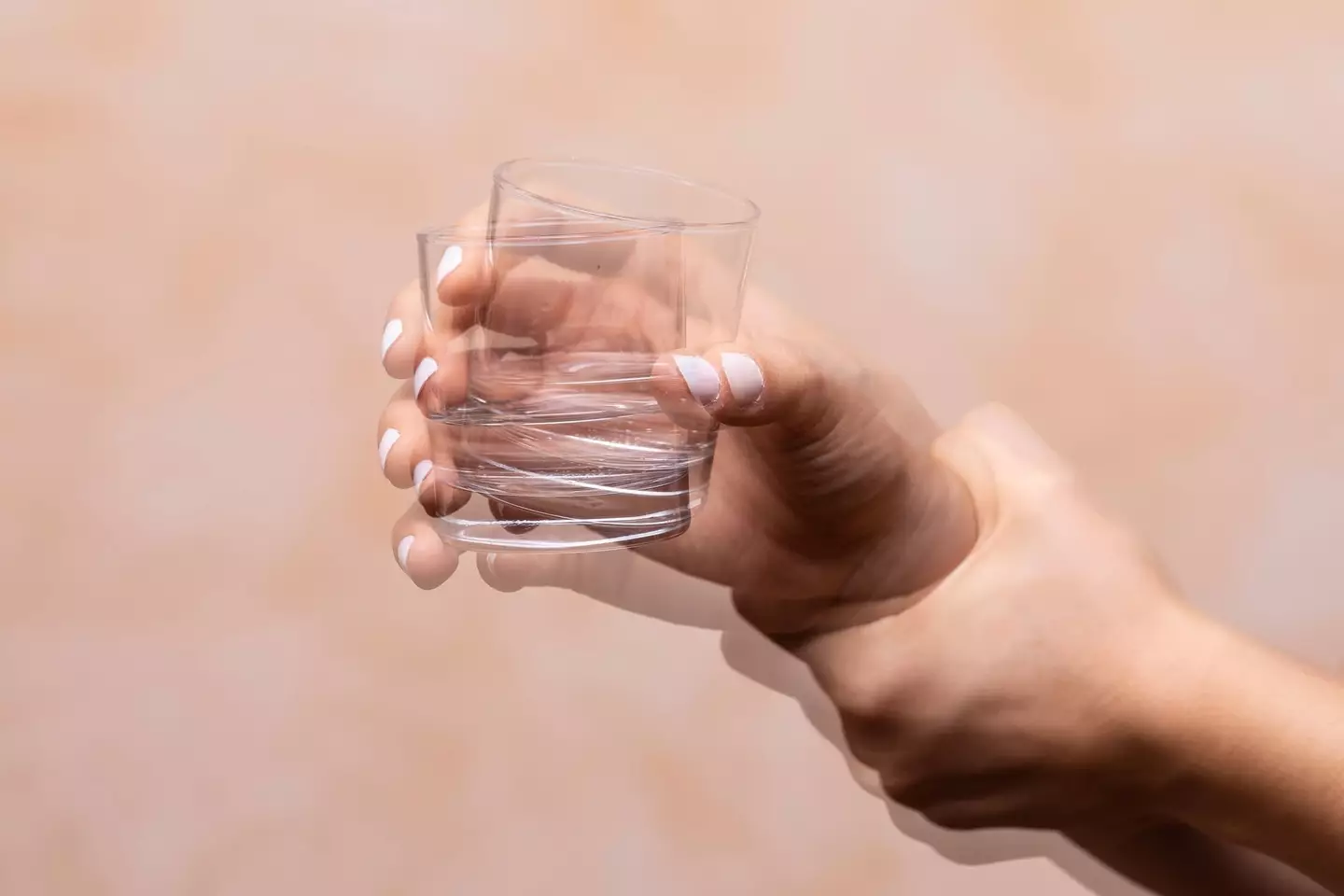
12 hours (Getty Stock Image)
12 hours alcohol free
At the 12-hour mark you may start to feel some withdrawal symptoms. This could be hand tremors, sweating, restlessness, and retching.
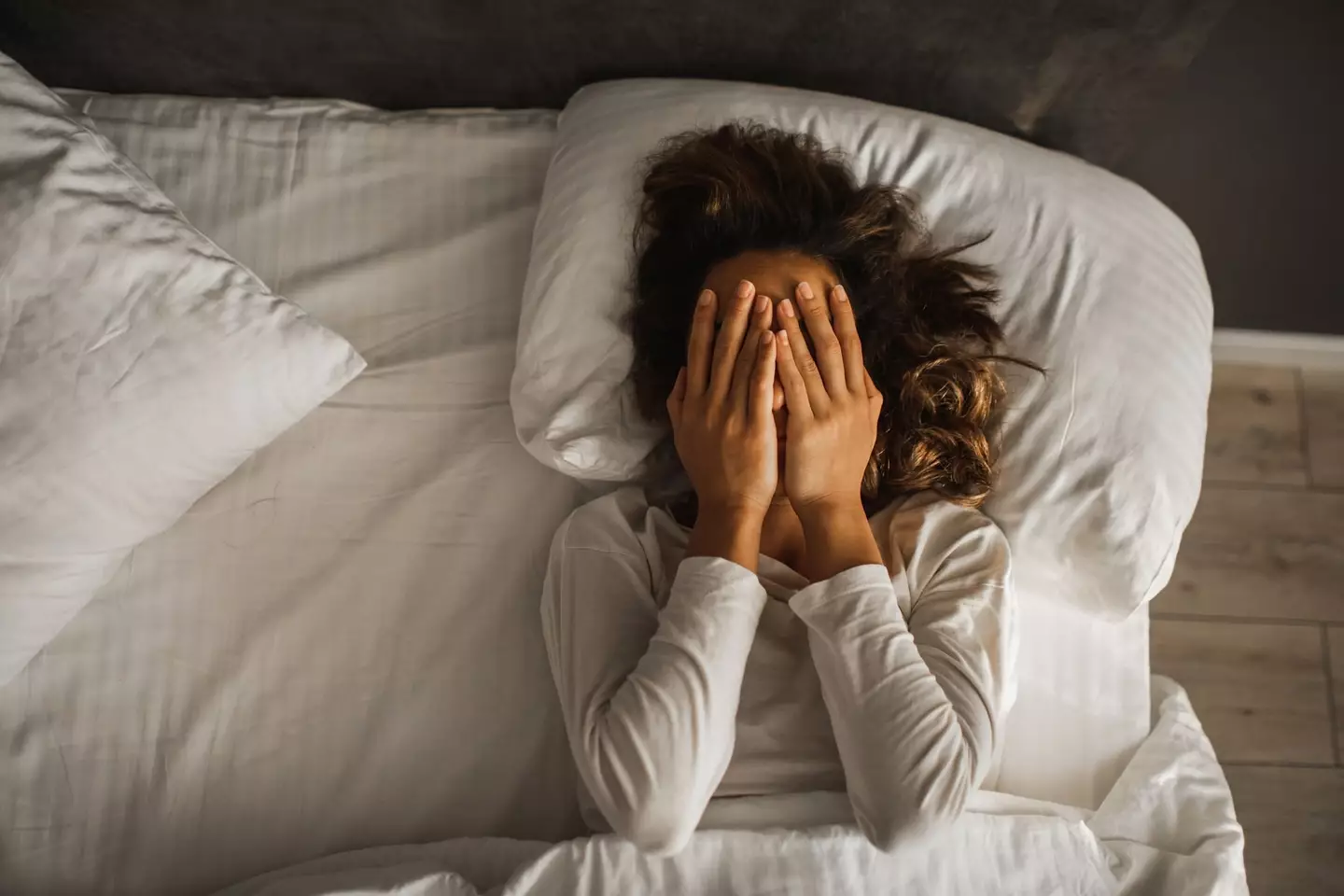
12-24 hours (Getty Stock Image)
12-24 hours alcohol free
Between 12 and 24 hours these will continue. Sleep is likely to be disturbed, and you could experience some alcohol cravings, and a low mood.
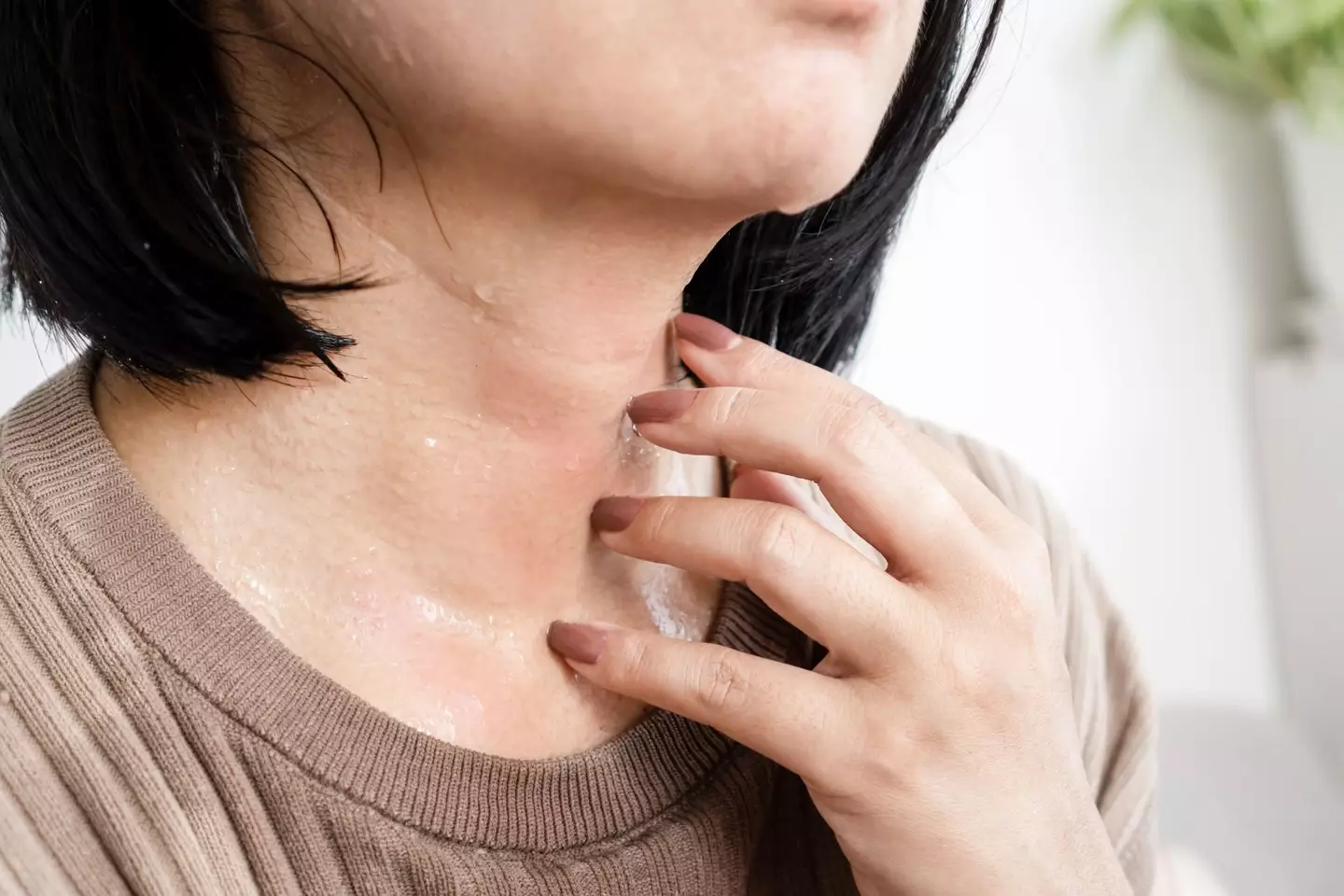
12-72 hours (Getty Stock Image)
12-72 hours alcohol free
From 12 hours to 72 is considered to be the most dangerous period if you are a very heavy drinker. In extreme cases, this could mean an increased heart rate, raised blood pressure, and seizures.
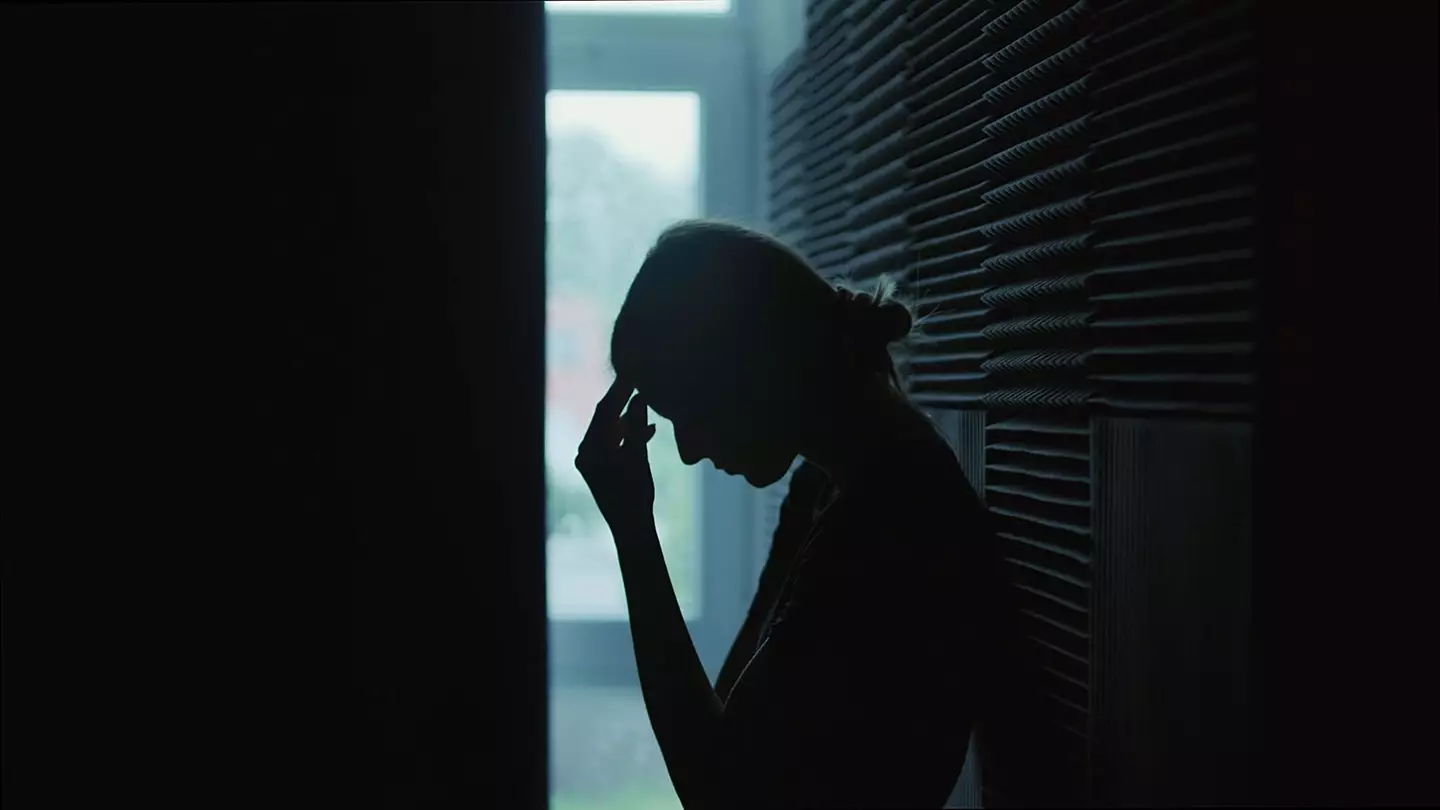
Three to seven days (Getty Stock Image)
Three to seven days alcohol free
Between three and seven days for most people the symptoms will begin to recede. However, for a few cases they can worsen and become Delirium Tremens, or DTs.
If this does happen then you should speak to a doctor as soon as possible.
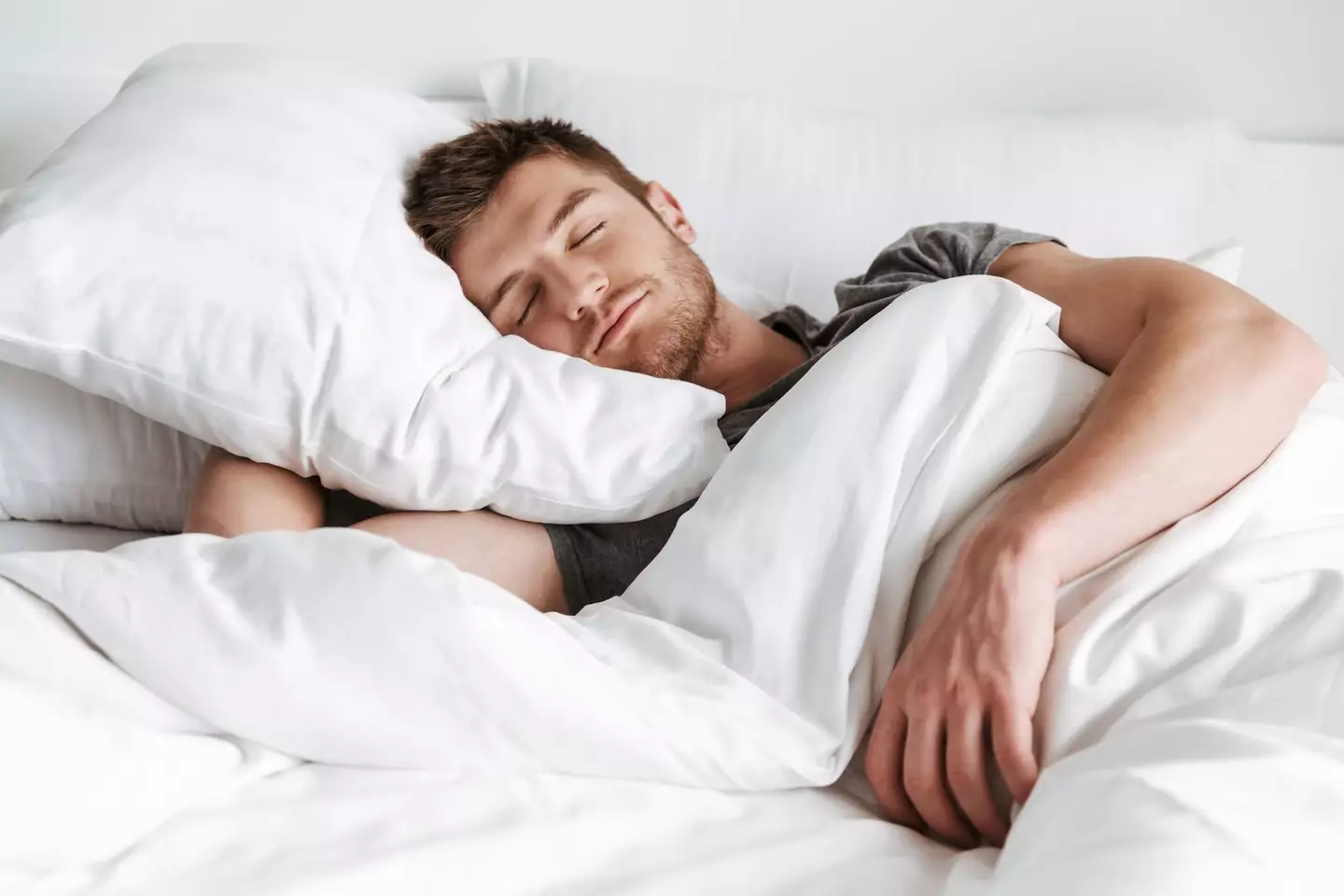
On week (Getty Stock Image)
One week alcohol free
After a week you may notice your sleep patterns beginning to improve, though it can sometimes take longer.
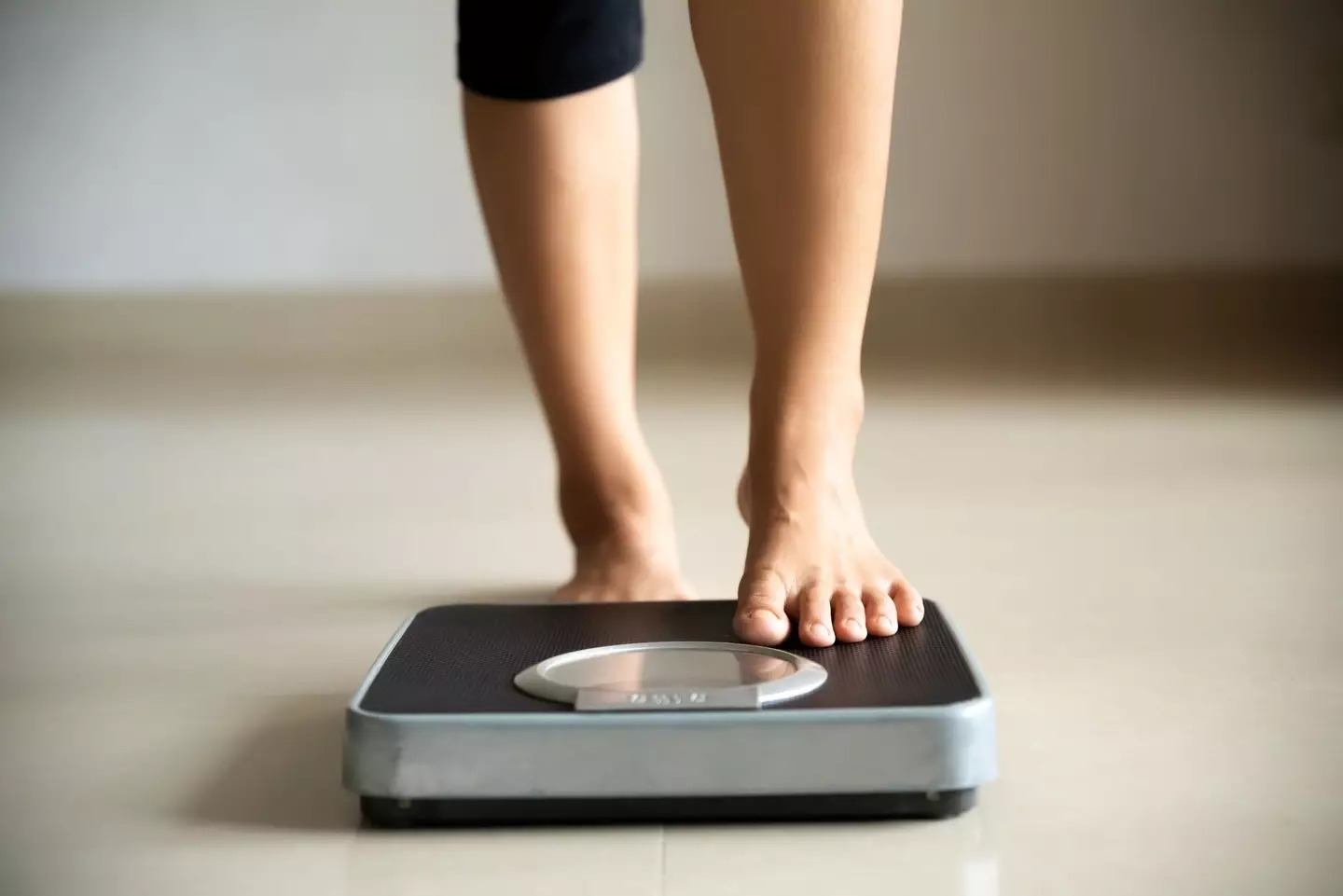
Two weeks (Getty Stock Image)
Two weeks alcohol free
At two weeks you may notice some weight loss, depending on how much you normally drink, as you are not taking in calories from your beverage of choice.
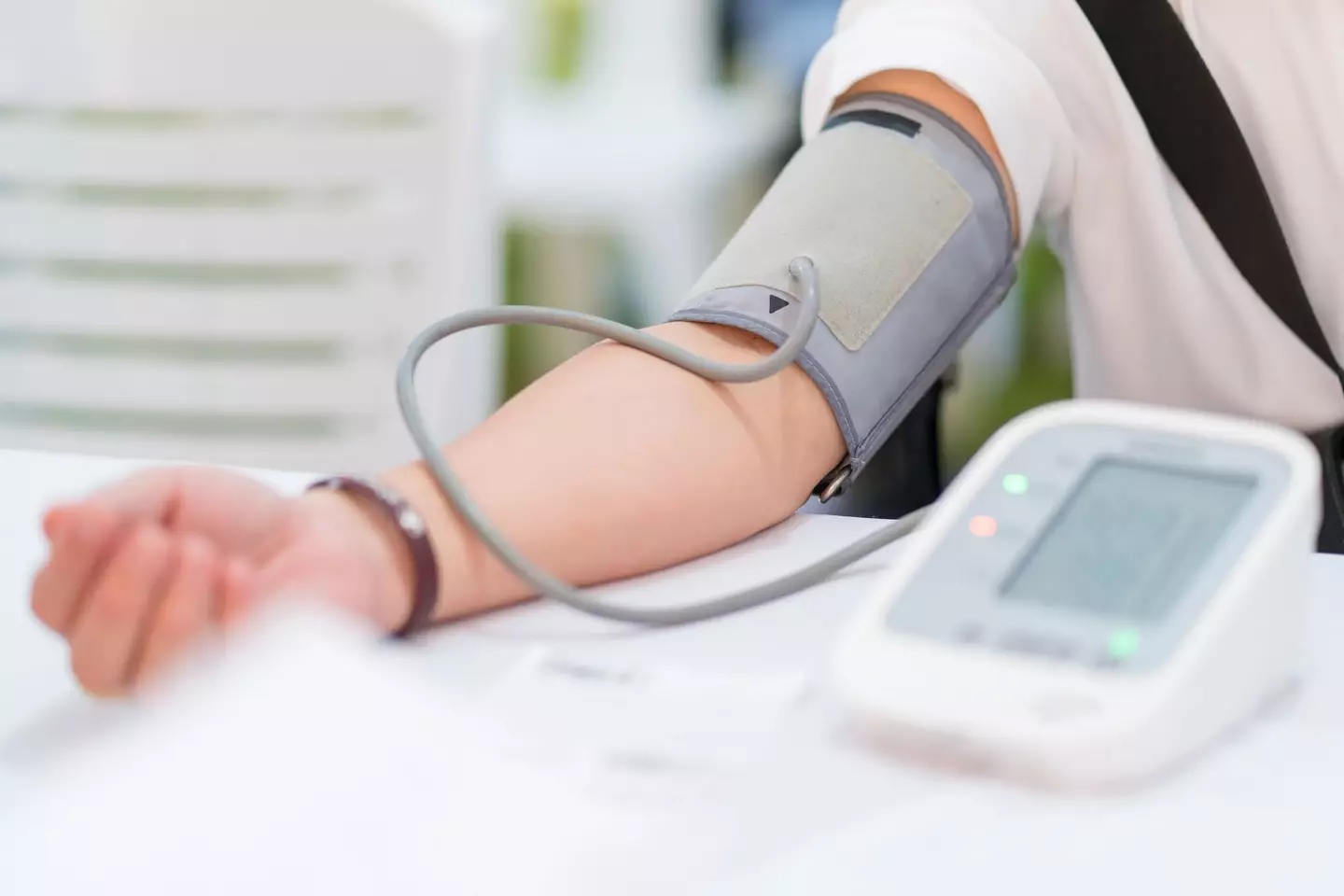
Three weeks (Getty Stock Image)
Three weeks alcohol free
From three to four weeks, you may see your blood pressure improving if alcohol was a factor in it before.
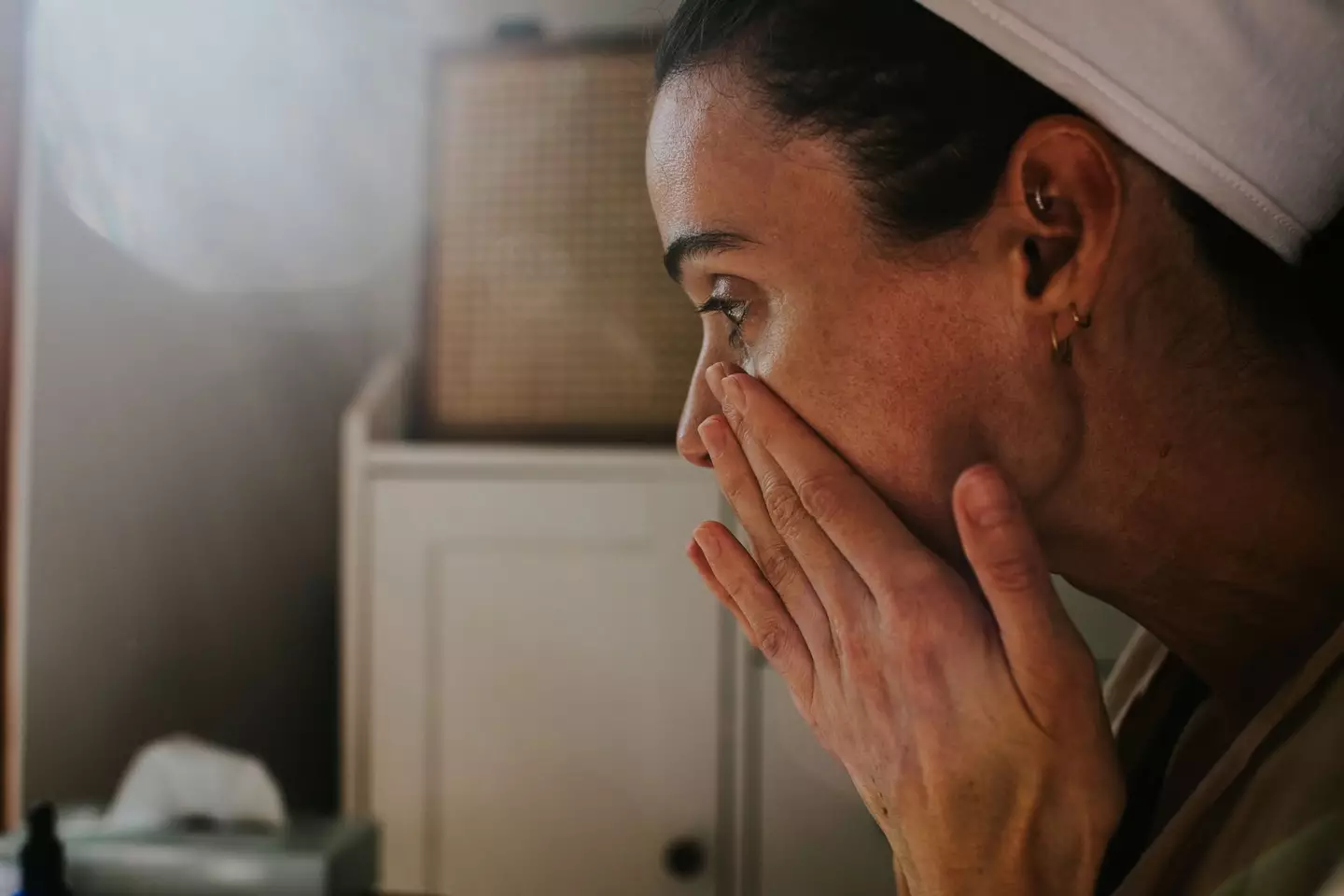
A month (Getty Stock Image)
A month alcohol free
Finally, at the one month mark you could see some improvement in your skin.
For the majority of people, cutting out alcohol for a month is a good way to reduce your consumption, and the dangers are only a factor in more extreme cases.
Taking a month out can also allow you to re-evaluate your relationship with alcohol as well as saving you a bit of cash.
If you do choose to start drinking again, you can do so because you enjoy it rather than perhaps as a compulsion or social crutch.
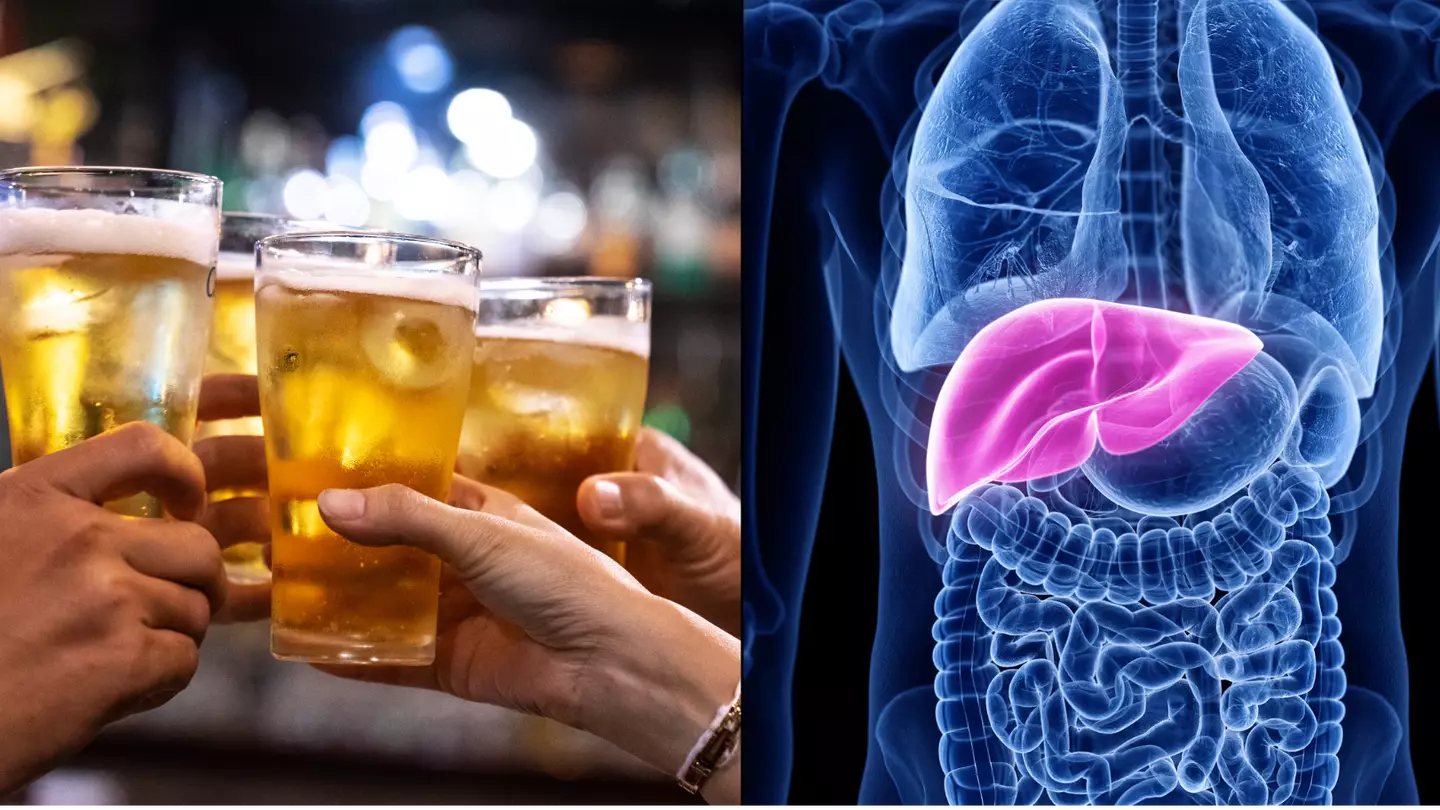
After the festive season many people will now be coming into January looking to lay off the booze for a few weeks.
While Christmas and New Year are a time for packing in the treats, a little over indulgence can mean that toning things down a bit in January isn’t a bad idea.
And one popular way to do this is to do Dry January – giving up alcohol for the first month of the year.
It’s certainly one way to feel a bit better, as even if and when you start drinking again in February, you can be a bit more moderate.
But, there are a lot of effects that giving up the sauce for a month can have on your body, depending on how much you drink.
As a caveat before we begin, if you are a heavy drinker or think you have a problem you should speak to your doctor. Suddenly stopping alcohol consumption completely can be dangerous in extreme cases, and should be done under medical supervision.
For most people however, Dry January can be a good way to cut back after indulging over Christmas and New Year.
So, according to Delamere, here is how stopping could affect your body.
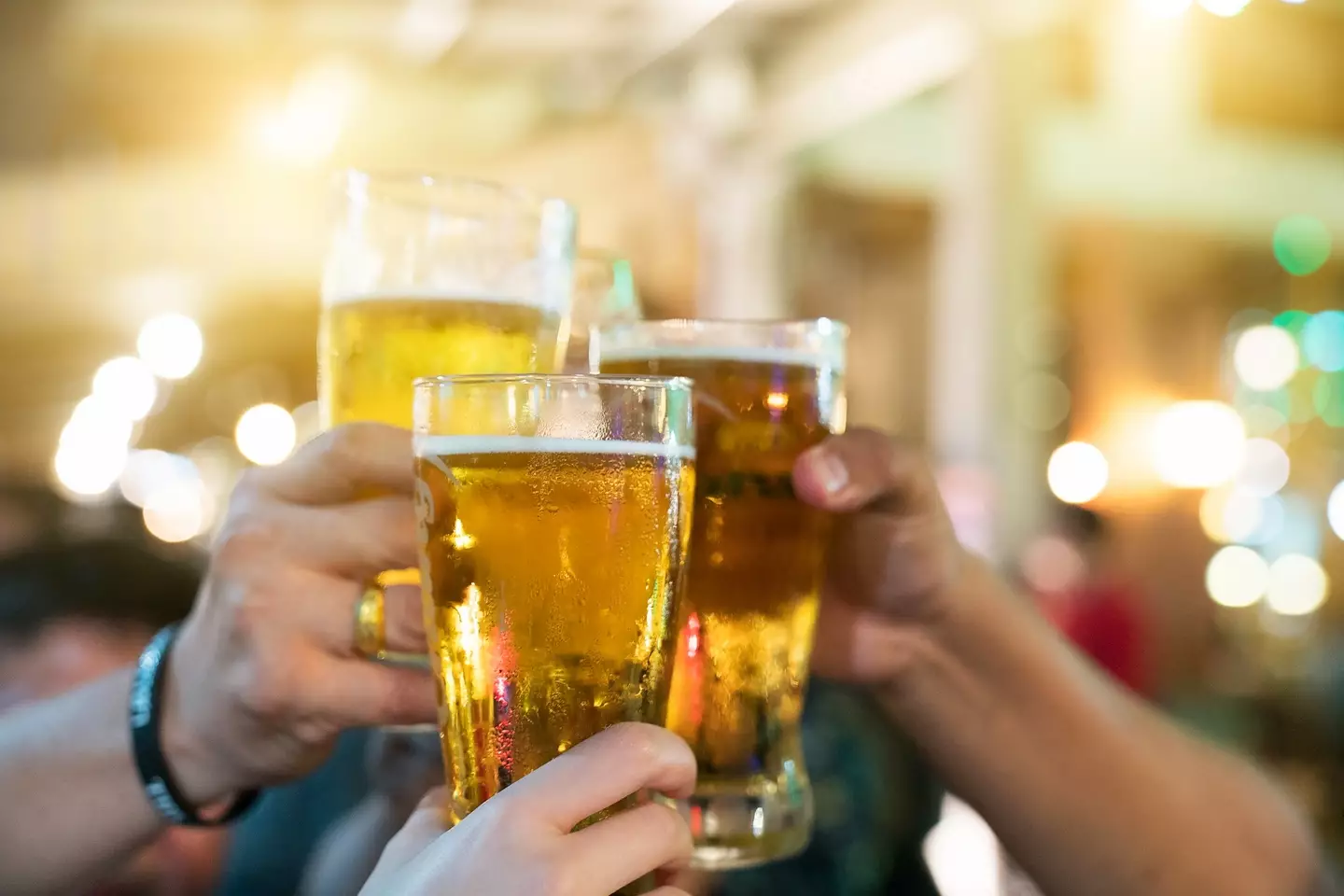
Witthaya Prasongsin/Getty
At the 12 hour mark you may start to feel some withdrawal symptoms. This could be hand tremors, sweating, restlessness, and retching.
Between 12 and 24 hours these will continue. Sleep is likely to be disturbed, and you could experience some alcohol cravings, and a low mood.
From 12 hours to 72 is considered to be the most dangerous period if you are a very heavy drinker. In extreme cases, this could mean an increased heart rate, raised blood pressure, and seizures.
Between three and seven days for most people the symptoms will begin to recede. However, for a few cases they can worsen and become Delirium Tremens, or DTs.
If this does happen then you should speak to a doctor as soon as possible.
After a week you may notice your sleep patterns beginning to improve, though it can sometimes take longer.
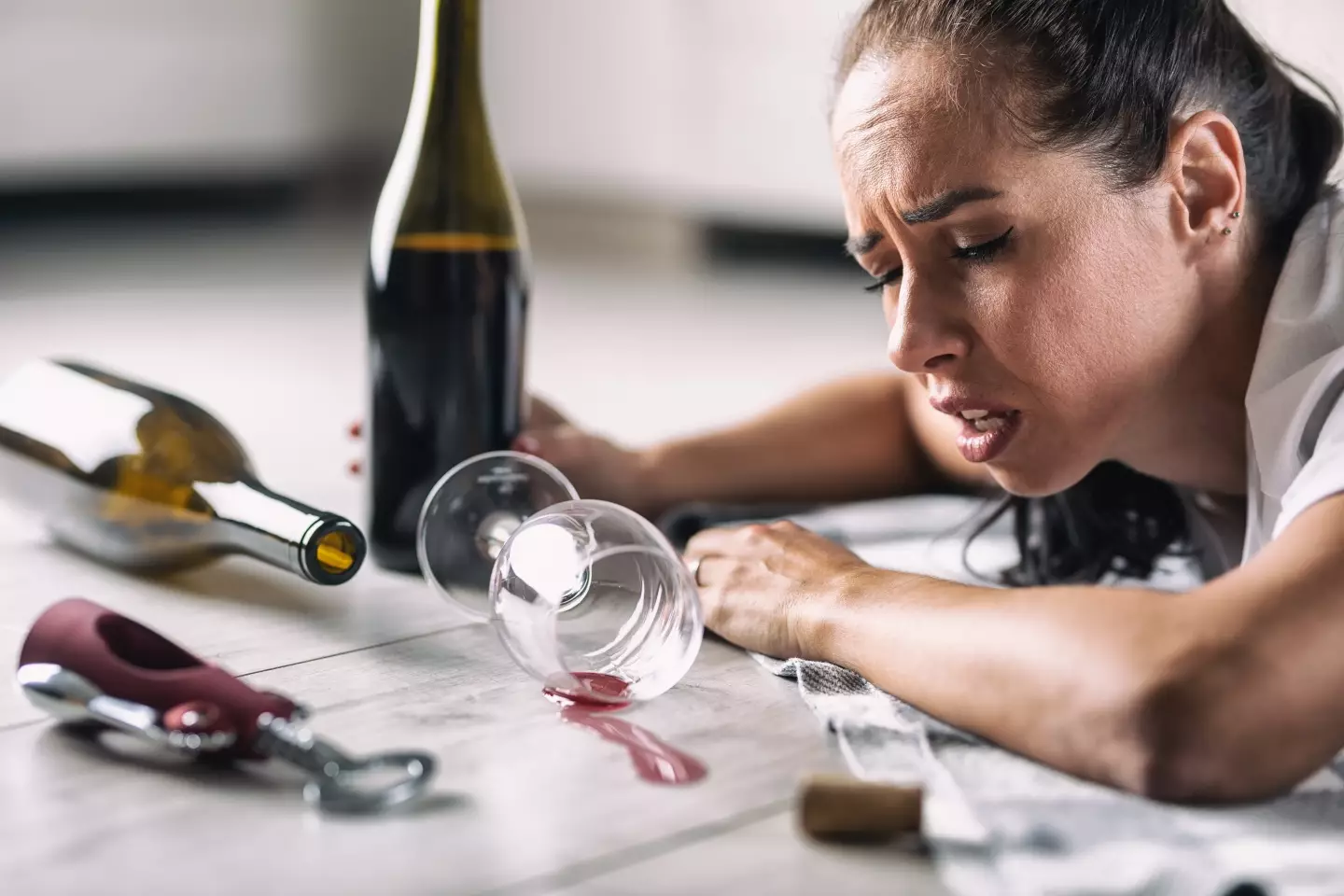
SimpleImages/Getty
At two weeks you may notice some weight loss, depending on how much you normally drink, as you are not taking in calories from your beverage of choice.
From three to four weeks you may see your blood pressure improving if alcohol was a factor in it before.
Finally, at the one month mark you could see some improvement in your skin.
For the majority of people, cutting out alcohol for a month is a good way to reduce your consumption, and the dangers are only a factor in more extreme cases.
Taking a month out can also allow you to re-evaluate your relationship with alcohol as well as saving you a bit of cash.
If you do choose to start drinking again, you can do so because you enjoy it rather than perhaps as a compulsion or social crutch.

A couple who decided to give up drinking for one year and document their sobriety on YouTube have shared what they found most difficult.
More and more people everyday consider giving up the booze.
With a better variety of non-alcoholic beverages being served in pubs and bars and Gen Z being a ‘sober-curious’ generation, stories like this are becoming more common.
In 2022, Craig and Chyna Benzine decided to embark on a year of sobriety, giving up alcohol completely and documenting their progress on Craig’s YouTube channel, WheezyWaiter.
In their video: ‘We Quit Alcohol for a Year, Here’s What Happened’, Craig and Chyna revealed their drinking habits and explained what they found most challenging about their journey.
“I feel like I’m going uphill all the time and my sleep is terrible,” Craig revealed.
Whilst Chyna admitted to feeling ‘tired’, ‘unmotivated’ and ‘foggy’ and wanted to know whether that was just her personality or because of what she was putting into her body.
I think we all wonder that to be fair, Chyna.
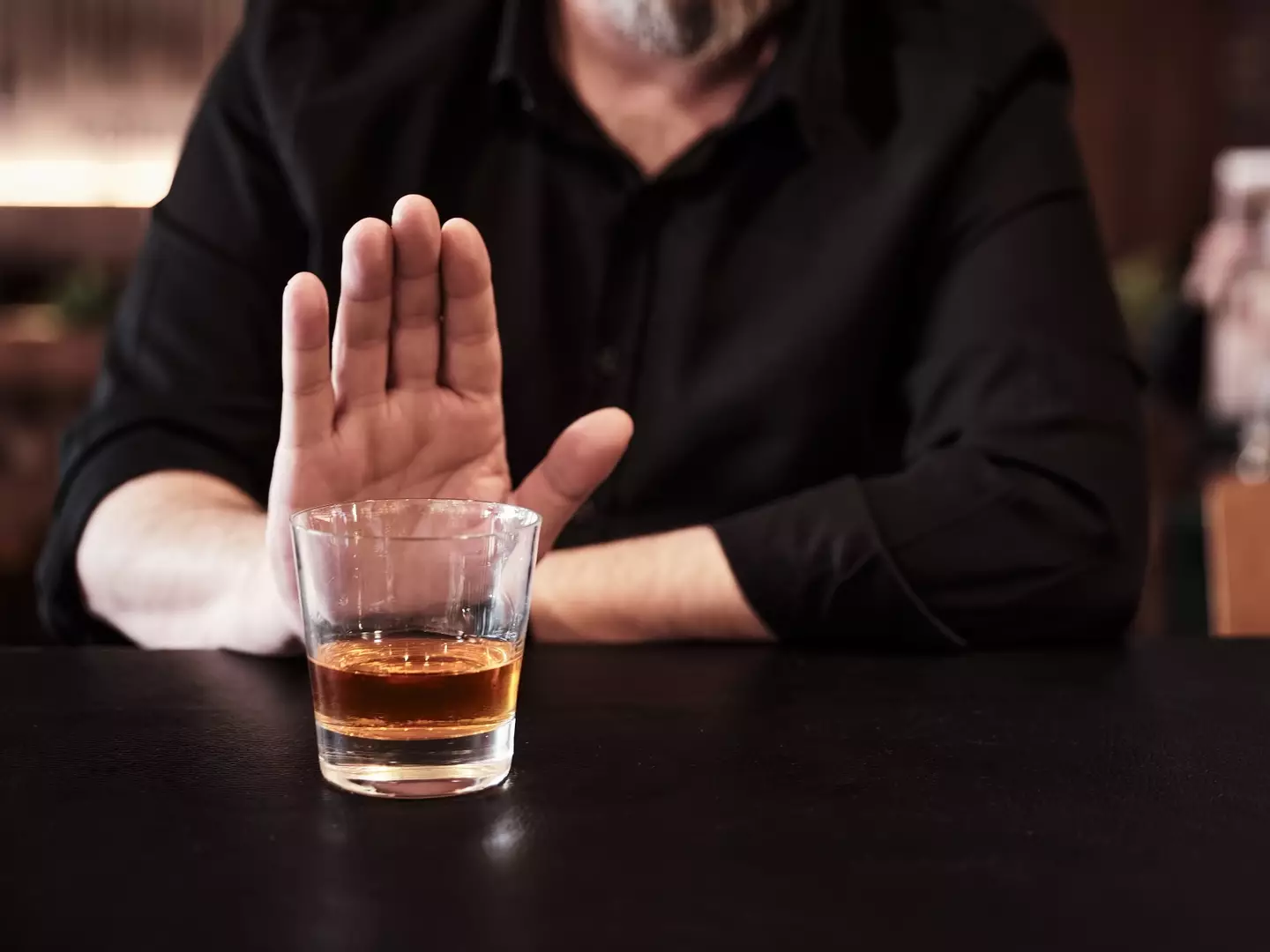
The pair went sober for a year. cagkansayin / Getty Images
One thing that came up was around being sober when socialising with friends and not finding enjoyment in being out having to watch their friends drink whilst they didn’t.
This is a worry a lot of people have, which makes sense considering how much of our social lives revolve around drinking.
Brunch, Christmas (sorry for bringing it up), work socials, you name it and there’s a reason to have a cheeky glass of Prosecco turn into cocktails and then inevitably shots – or is that just how my Wednesday nights go?
“With the warmer weather has come more socialisation and the desire to have a drink.
“Now it’s summer time, it’s prime drinking season,” Chyna explained.
“Pre starting this challenge, every night I would be like ‘ooo, I think I’d like a glass of wine’, maybe an old fashioned. I never think about that at home, I think about that when we’re at your parents house because they’re having [one].”
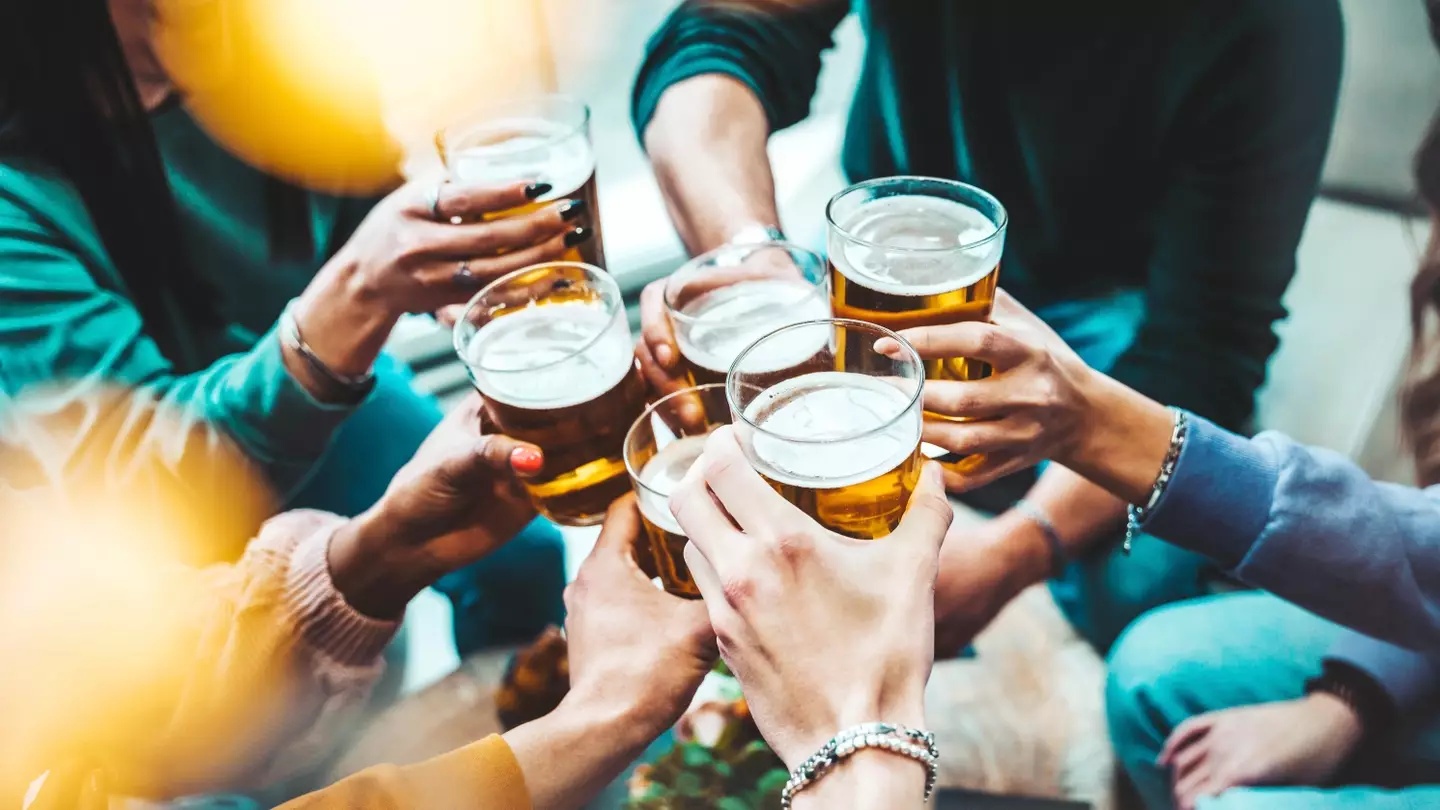
The couple were worried about socialising sober. Kar-Tr / Getty Images
The couple revealed how they tried ‘proxy wines’, ‘NA beers’ and ‘non alcoholic liqueur-type things’, but after a while, they stopped getting that urge.
It was around month four that Chyna revealed: “I don’t miss drinking,” and it seems that hanging out with friends sober also stopped being a concern.
Craig said: “I have had more opportunities to hang out with friends later at night but I just get tired and want to go to bed. They wanna keep going because they’re drunk. Not always drunk but been drinking and that masks the feeling of being tired.”
For Craig, something else he found hard that he wasn’t expecting was a change in his emotions.
“So the past like 3 or 4 days, I wake up feeling pretty darn good, but around 4 PM, exhausted, negative, kinda grumpy.”
With feeling grumpy and exhausted also came something else unexpected, boredom.
“When we first quit, I was very tired and very bored,” Craig said.
“For a while there it felt like something was missing in the evening.”
“Now it’s like I’ve completely forgotten this isn’t how it’s always been.”
“I’m kind of nervous for the year coming to an end. I feel like I need the parameters.” Chyna said later.
When the challenge did end and the pair went back to drinking, it seems they were able to curb the amount they consumed.
Chyna admitted to not liking the feeling of drinking again and felt like she was ‘done’ halfway through an old fashioned.
Craig echoed her feelings and, even though he seems to be more of a drinker than Chyna, he also didn’t feel the need to over indulge and woke up feeling fine.
“I feel like I have deeply changed… this has easily been the most beneficial challenge of my life,” he said. While Chyna resolved, “I don’t even have to restrain myself.”
Well done to them both for sticking to it!
Please drink responsibly. If you want to discuss any issues relating to alcohol in confidence, contact Drinkline on 0300 123 1110, 9am–8pm weekdays and 11am–4pm weekends for advice and support
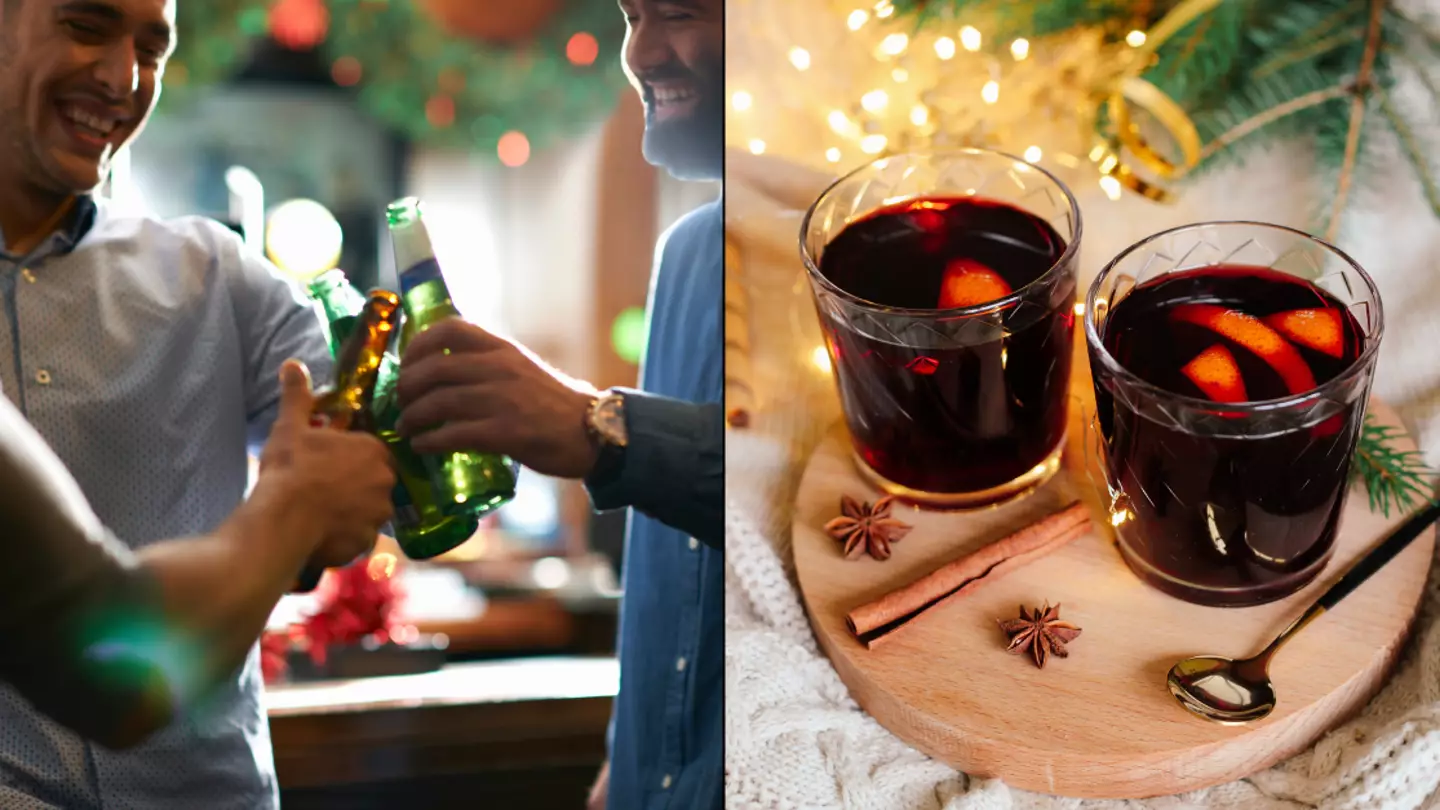
Hello everyone, sorry to mention the dreaded ‘c’ word but Christmas is coming sooner than you think.
Just a couple of months ago it was the final days of summer and a couple of months from now the festive period will be upon us as it’ll be Christmas frigging Eve.
Hopefully you’ll have all your presents bought and wrapped, the turkey prepared to go in the oven and your itinerary for the next few days all nice and clear.
However, for some people the festive season can be rather rough going for a plethora of reasons, one among them being that rather a lot of alcohol is consumed during it.
Though the season to be jolly is only a couple of months away there’s a lot of people who’ll equate being jolly with being drunk.
For those struggling with alcohol addiction it can be a particularly difficult time, and there are six signs of a borderline alcoholic which might help people spot their own behaviour.
.jpg)
This all looks like fun, but how much are you having over the Christmas period? (Getty Stock Photo)
Drinking without thinking
According to the National Institutes of Health (NIH), ‘people like to drink alcohol because of its ability to alter emotional states’.
They say that alcohol ‘induces euphoria, relaxation, and disinhibition while reducing stress and anxiety’.
If you’re nice and relaxed then you could just keep drinking and not really realise how much you’ve actually had in total.
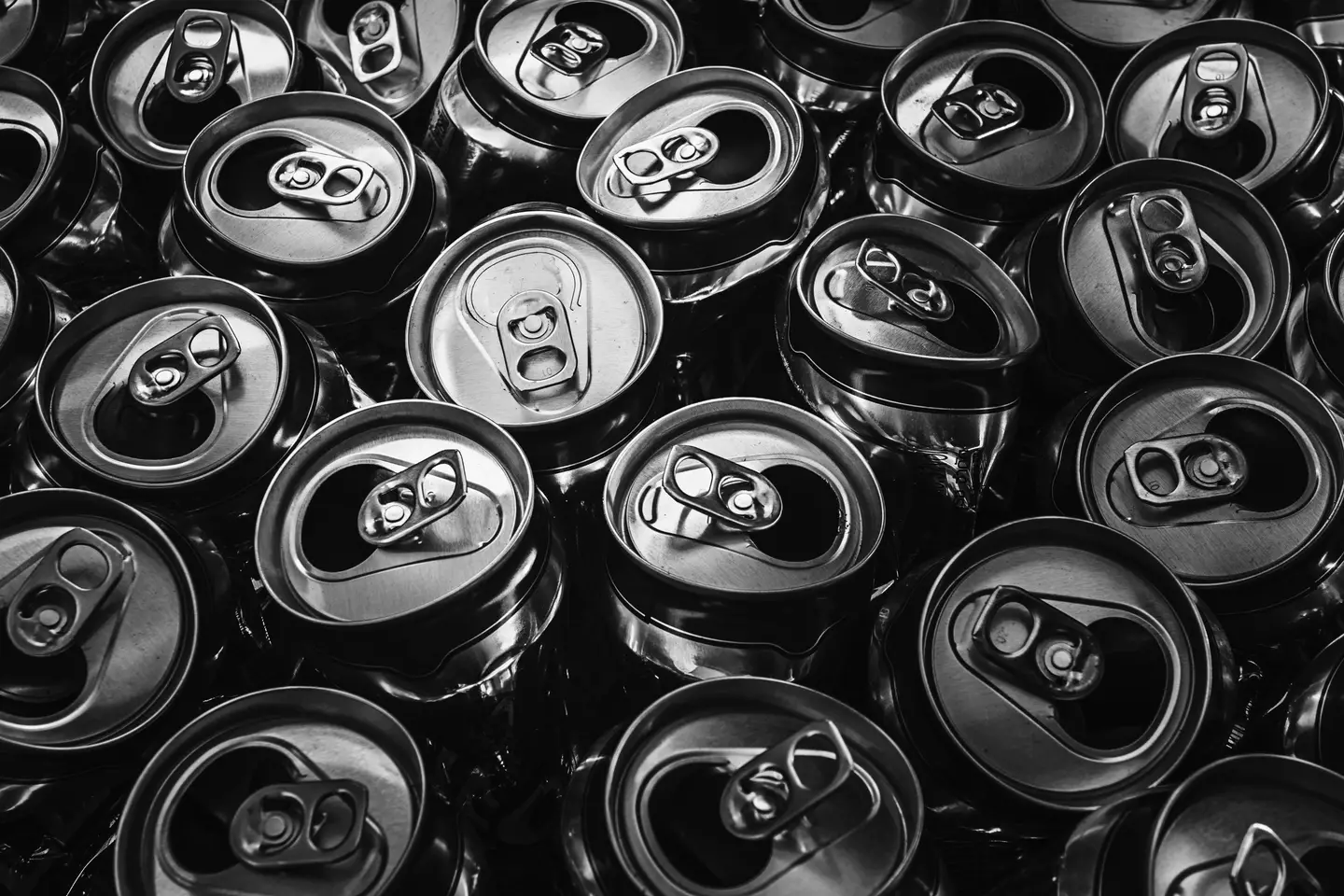
If you drink a lot without realising it that’s a concerning sign. (Getty Stock Photo)
Regular binges
Dr Dave Nichols, an NHS GP, told The Sun that alcoholism is when a person has an uncontrollable desire to drink.
“Their body is dependent on alcohol,” he said.
Routinely drinking in large quantities is a clear sign of alcohol addiction, and at Christmas there’s a lot of opportunities to do this.
Plenty of people will be willing to have drinks, while the major dates in the final week of the year are often moments of major alcohol consumption.
Are you letting loose for the Christmas period, or are you binge drinking a lot?
The NHS has advised people planning to drink heavily during the festive period to beware the consequences.

During the winter months you might feel more pressure to drink. (Getty Stock Photo)
You only socialise if there’s alcohol
With the festive period coming up there’s lots of opportunities to socialise and get drunk, it’s one of the times of the year where drinking throughout the day isn’t going to raise many eyebrows.
However, many who are addicted to alcohol will only be interested in social situations if they know it’s going to be an opportunity to drink.
If you find yourself saying no to an invitation because you know there’s not going to be any alcohol involved it’s considered a sign.
Going for a big walk on Boxing Day may not be your cup of tea, but is that because you’d rather be where the alcohol is?

The festive season offers a lot of opportunities to drink. (Getty Stock Photo)
Regular day drinking
“Alcoholics will usually develop physical and psychological symptoms if they stop drinking,” Dr Nichols explained.
“Borderline alcoholics might experience symptoms such as abdominal pain, stress, anxiety, bad skin, trouble sleeping, irritability and higher blood pressure.”
Once again, with winter bearing down on us and Christmas closer than you think drinking through the day will be done by many, the issue is that there’ll be some who do that on the regular.

Some Christmas celebrations start with alcohol early in the day and basically don’t stop. (Getty Stock Photo)
Others not drinking annoys you
During the festive season it’s helpful to try and calm down any disagreements before they spiral into something too serious.
You might not be able to avoid that relative airing some quite extreme politics under the guise of ‘just wondering’ while everyone else is trying to watch the Wallace and Gromit special, but someone struggling with alcohol addiction might turn on those who’ve decided to take a break from drinking.
If you find yourself getting irrationally annoyed at people who’ve decided to put the champagne glass down for a bit then you might need to examine what’s really getting to you.
Other advice from the NHS warns you not to try and pressure people into drinking with you, as there are many valid reasons why they may not want to do it.

If others not drinking annoys you then you may need some help. (Getty Stock Photo)
You break the NHS guidelines regularly
The NHS guidelines advise not to regularly drink more than 14 units a week.
This is probably going to be broken during the Christmas period, but if you’re doing this on many other weeks of the year it’s a worrying sign you may be an alcoholic.
All that alcohol will be doing you some serious damage on the inside as well.
Dr Nichols warned: “The most common long-term physical impacts of borderline alcoholism are abnormal liver function, cardiovascular disease, diabetes and mental health problems, but these are often hidden diseases and patients are unaware of them until they progress.”
Additional words by Anish Vij.
Please drink responsibly. If you want to discuss any issues relating to alcohol in confidence, contact Drinkline on 0300 123 1110, 9am–8pm weekdays and 11am–4pm weekends for advice and support.
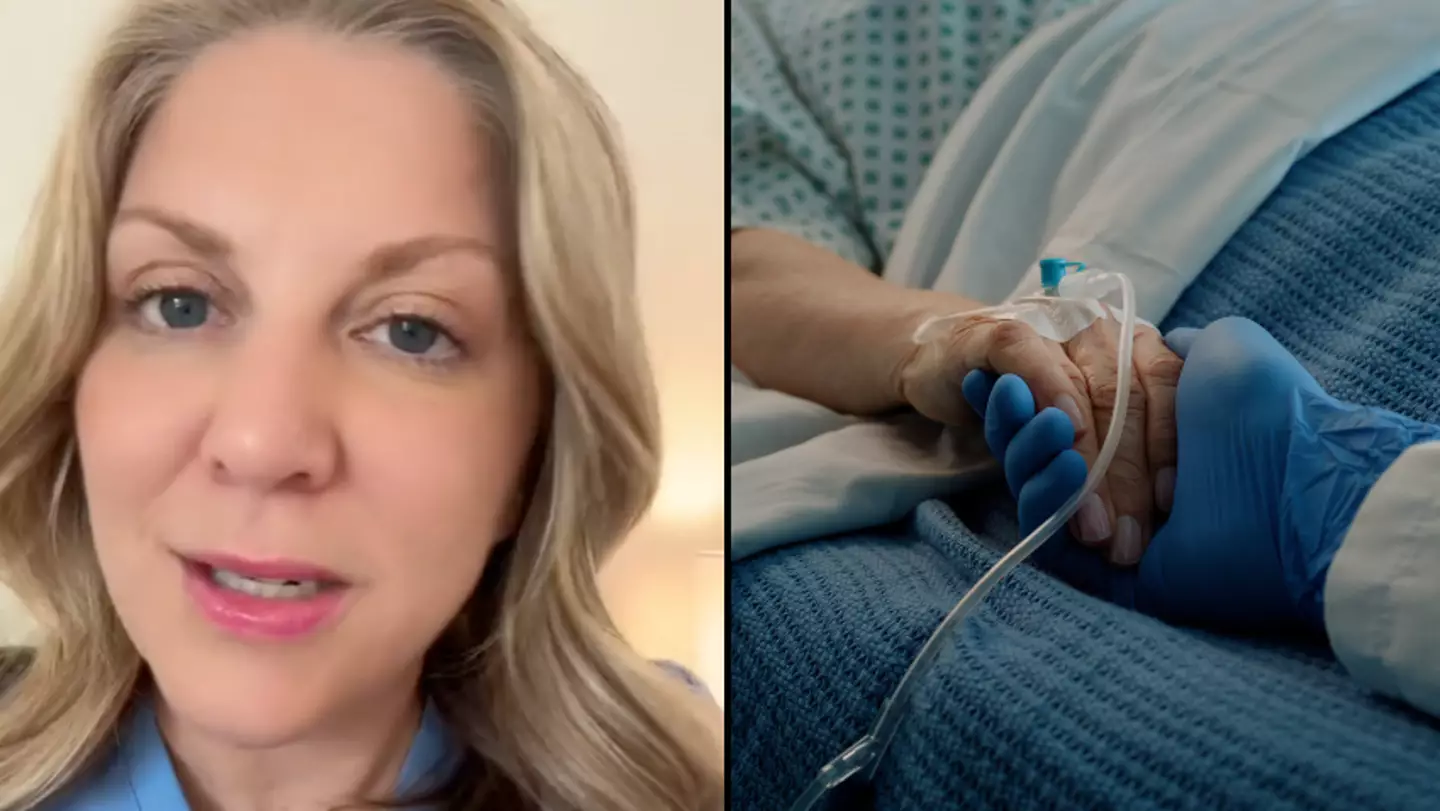
A hospice nurse has outlined what ‘death actually looks like’ in four stages so people don’t ‘freak out’ when losing a loved one.
Taking to TikTok, palliative care nurse Julie McFadden has walked her followers through the four stages of death, hoping to help people prepare for the loss of their loved ones as she believes that ‘education decreases fear’.
The 41-year-old, who is based in Los Angeles, has recently answered one of the most common questions she gets as someone in her line of work: what does dying actually look like?
McFadden has explained that dying is a process and consists of four phases spanning across six months.
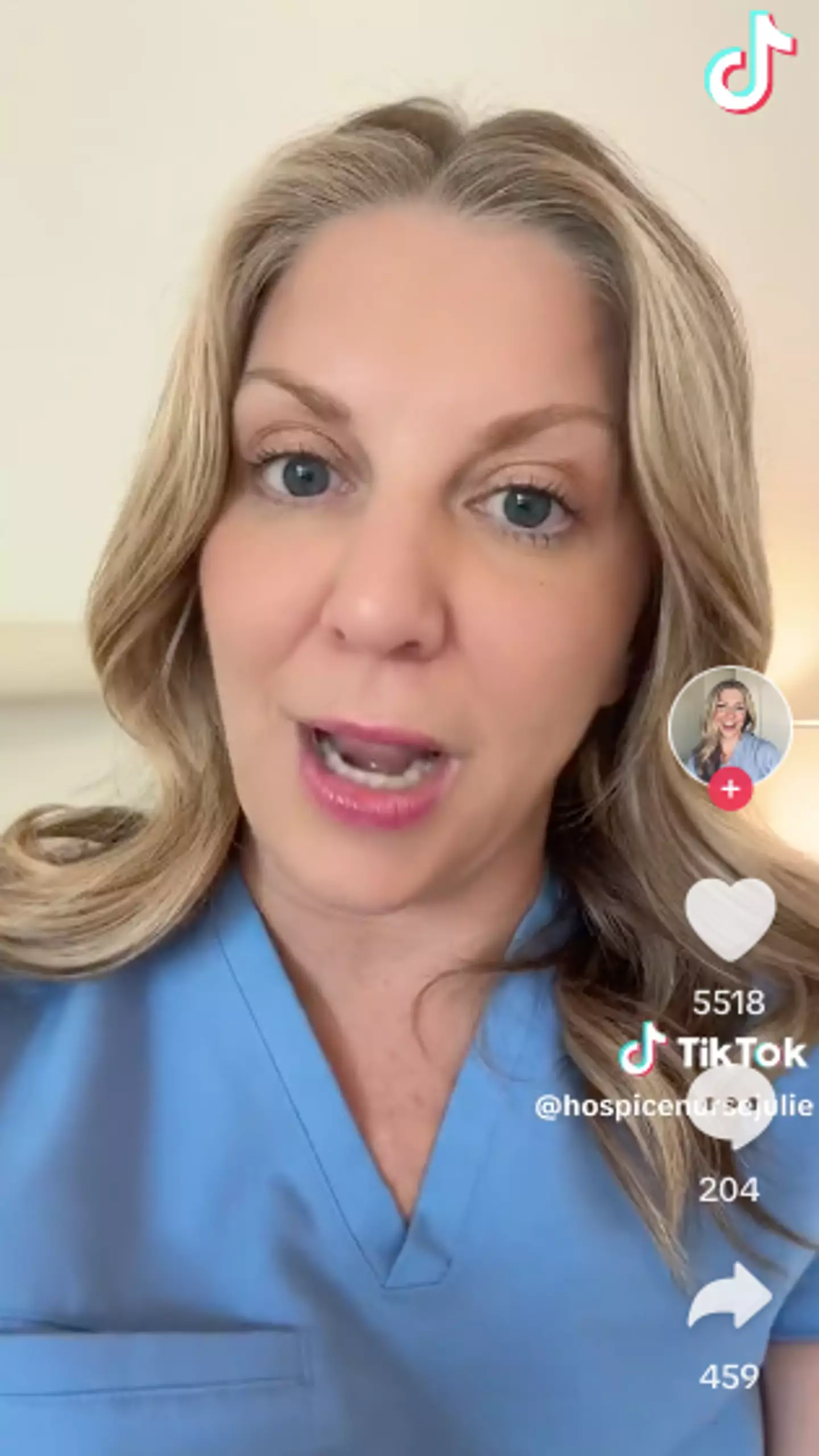
(TikTok/Hospicenursejulie)
Slowing down
In the first phase of dying, which she describes as ‘slowing down,’ the symptoms one experiences are more generalised.
“For instance, you’re just going to be generally tired, generally lethargic, not eating and drinking as much, probably being less social,” she said.
A decline in strength
The second phase starts around three months before someone passes and includes more visible signs of debilitation and a decline in strength.
“The closer you get to death – let’s say three months out – you’re going to be more debilitated,” she explained.
“It’s going to be difficult for you to leave the house, you probably are eating and drinking very little throughout the day, and you are sleeping more than you are awake.”
The transitioning phase
The third phase is known as ‘transitioning’ and that’s when people can experience hallucinations, and it happens about a month before death.
“This is when people will start seeing dead relatives, dead loved ones, dead pets, things like that,” McFadden said.
She explained that someone ‘can be up and having a normal conversation with their family’, whilst ‘saying they’re seeing their dead father in the corner who is smiling and telling them he’s coming to get them soon and not to worry’.

Those who work in palliative care have seen a common pattern among those who are dying. (Getty Stock Photo)
Actively dying
The fourth phase is the more distinct, scariest time in the dying process.
“The actively dying phase is what scares people, because they’re not used to seeing it and they don’t know what the heck’s going on,” McFadden said.
“Your loved one will likely be fully unconscious, no food or water, possibly for days. They’ll be incontinent, so you will have to change them.”
She warned that someone dying ‘will have changes in breathing, so their breathing is going to look different’.
‘Metabolic changes’ such as a difference in skin colour, high and low temperature, and the ‘death rattle’ can also occur.
She explained of the latter: “It’s literally just a bit of saliva collecting at the back of their throat because their mouth is open, their breathing is going over their saliva and causing a gurgle.”
While these can be upsetting, McFadden insists they’re a ‘normal part of death and dying’ which ‘is not hurting your loved one’.
“It’s important to be educated about what death actually looks like,” she concluded. “Movies and television don’t do it justice, then people see it in real life when it’s their loved ones and they freak out.”



